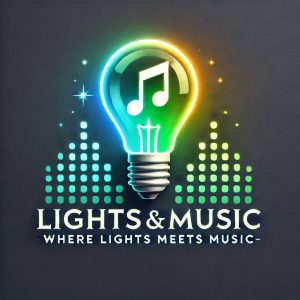You know those old-school Christmas lights where one bulb burns out and the whole string goes dark? Yeah, these aren’t those.
The magic lights you see in the display are called pixels. Each pixel isn’t just one light—it’s actually three tiny LEDs inside: red, green, and blue. By mixing those colors together at different brightness levels, each pixel can shine in almost any color you can imagine. With 256 levels of brightness, when combined that adds up to over 16.7 million possible colors per bulb.
On a string of Pixels (most are 50 or 100 pixels per sting) All the pixels are connected in a line, like beads on a string. When the show starts, the controller sends out a long stream of color instructions.
Here’s how it works:
• The first pixel grabs the very first set of instructions (its color and brightness).
• Then it passes the rest of the data down the line to the next pixel.
• That pixel takes its color, then passes the rest along… and so on, all the way down the string.
This happens thousands of times per second, so every pixel knows exactly what color it should be—whether that’s glowing red, fading blue, or flashing rainbow in perfect time with the music.
It’s like a conga line of Christmas lights—each one takes its step, then nudges the next one to keep the dance going.
Behind the scenes, the most common program called xLights. It’s like the conductor of a very sparkly orchestra. We map out the music beat by beat, and xLights tells every single light what to do—whether that’s twinkling, fading, or bursting into rainbow madness.
What Can xLights Do?
• Sync Lights to Music: Every twinkle and color change happens in perfect time with the beat.
• Create Effects: Waves, spirals, snowflakes, rainbows—you name it, xLights can animate it.
• Design the Show in 3D: I can build a virtual model of my house and yard to test effects before I ever plug in a single light.
• Scale Up: Whether it’s 500 lights or 50,000, xLights can handle it.
To make it all work, It needs 2 types of micro computer controllers. The one that sends the Signal to each pixel can be a simple ESP32 micro computer, they can cost about $5 to $10 and can run about 400 to 800 pixels. The “Show Player” that Controls the micro controllers and the audio are most likely a simple $35 Raspberry Pi. It’s a tiny computer—about the size of a deck of cards—that can do almost anything your regular computer can, just with less power and cost. I am also using a few ESP32 Computer / Microcontrollers. Much smaller and simpler then the Raspberry Pi and can be found for $5 to $10 each.
xLights is the software that makes the magic happen. Imagine it like a music editor, but instead of mixing drums and guitars, I’m mixing light. With xLights, I can take a song, map out the beats, and then tell thousands of lights exactly what to do—flash, fade, swirl, sparkle, or even “chase” across the yard like fireworks.
It’s kind of like choreographing a dance routine… except my dancers are tiny pixels and they never get tired.
They take the instructions from my show computer and tell the lights how to behave. Imagine traffic lights at a big intersection—without them, it would be chaos. With them, every car (or in this case, every pixel) knows exactly where to go and when.
The result? I have 3,000 pixels of lights working together to dance with the music, turning my yard into a live concert for your eyes.
